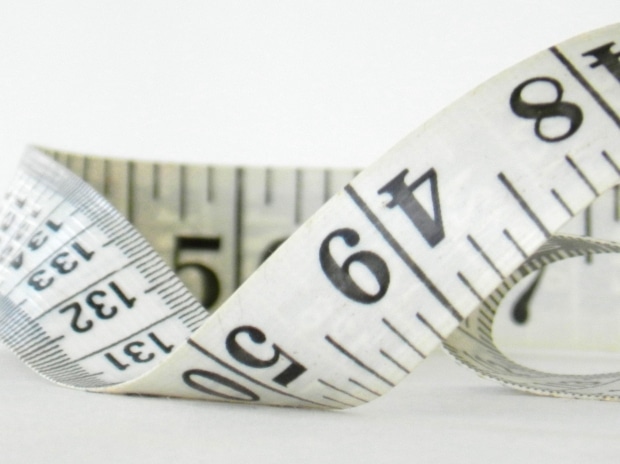
Obesity And gout: Being obese or even just overweight is a major gout risk factor. Here you’ll discover why being overweight can actually double your gout risk and being obese can triple it.
Obesity and Gout
According to the World Health Organisation, in 2016, more than 39% of adults worldwide could be classified as being overweight and 13% obese. And the trend is continuing: worldwide obesity has more than tripled since 1975.
These are truly alarming statistics for all of us, but what if you suffer from gout? Does being overweight increase your risk of gout?
The root cause of gout is higher-than-normal concentrations of uric acid in the blood, a condition called hyperuricemia. Over time monosodium urate crystals can form out of the acid and appear in the joints and associated tissue.
It’s your body’s natural inflammatory response to these crystals that produces the symptoms we associate with a gout attack: swelling, inflammation, redness, stiffness and agonizing pain.
Uric acid is continually being produced during purine metabolism, which purines exist in your body’s cells as well as in the cells of the food you eat.
Normally, excess uric acid is processed and excreted from the body via the kidneys. But if the body itself is producing too much acid or the kidneys aren’t excreting enough, excess uric acid can continue to build up in the blood leading to hyperuricemia and a higher risk of gout.
The Link Between Obesity and Gout
It has been recognized for some time now that being overweight is a major contributor to high uric acid and gout.
Studies have shown that being overweight causes insulin resistance which hampers the kidneys in carrying out their duties. This then reduces uric acid excretion which, in turn, leads to high blood uric acid. Not only that, fat cells themselves contain proteins called leptins which can also affect the kidneys’ ability to excrete uric acid.
In addition, there’s clearly more bodily tissue in an overweight person than in a healthy person, so there’s more uric acid being produced (from purines) during the metabolizing process. When you add this to increased insulin resistance, you can see why being overweight is recognized as a major factor in the onset of gout.
And this is backed up by several studies…
Obesity and Gout Studies
In 2005, Dr. Hyon Choi showed that the risk of gout is twice as high in overweight people and three times higher in obese people as in those who aren’t overweight.
A Johns Hopkins University study, published in Arthritis Care and Research, found that the onset of gout was, on average, 3 years earlier in obese people compared with non-obese, and 11 years earlier in those who were obese in early adulthood, as against those who weren’t so in early adulthood.
It’s clear then that being overweight is a crucial risk factor for gout. And the more overweight you are the higher that risk.
But studies also have shown that the opposite is true: losing weight helps to lower the risk of gout. And, if you’re overweight, even losing as little as 10 pounds can lower your risk of gout by as much as 40%.
So, as a gout sufferer, you really need to know your weight position. Are you overweight? Obese even? If you are it’ll be an uphill battle to control your gout if you just ignore it.
How to Know if You’re Overweight or Obese
A common way to determine if you’re overweight or obese is by your BMI (body mass index) which is a number derived from a ratio of your weight to your height (squared) i.e. BMI = weight/height².
- Overweight: BMI between 25.0 and 29.9
- Obese: BMI between 30 and 39.9
- Severely Obese: BMI of 40 and above.
[You can easily calculate your BMI using this BMI calculator.]
But don’t think that, just because you fall into the overweight category and not obese, you’re off the hook; you aren’t. Both carry serious health risks, such as:
- some cancers
- hypertension (high blood pressure)
- heart disease
- stroke
- fatty liver
- insulin resistance
- type 2 diabetes
- high cholesterol
- high triglycerides
- erectile dysfunction
- gout
…and more.
Belly Fat
Now, whilst using BMI is a good indicator of your overall weight position, it does have some weaknesses:
- If you’re an athlete or are muscular, it can overestimate your body fat.
- Conversely, if you’re older or have lost muscle, it can underestimate your body fat.
- It doesn’t take into account the different types, and location, of fat in your body.
For example, belly fat is now widely recognized as being more of a health risk than, for example, thigh and hip fat.

[Source: Health Nucleus]
There are two types of belly fat; subcutaneous fat (under the skin – the stuff you can see) and visceral fat (internal fat that surrounds your organs that you can’t see).
Visceral Fat
It’s now believed that visceral fat plays a more important role than other fats in serious conditions like dementia, diabetes, stroke, heart disease, etc.
The problem is it’s not possible to figure out how much of your belly fat is subcutaneous and how much visceral, unless you have a CT scan which, of course, is extremely costly.
However, experts say that if you have a big belly you’ll definitely have visceral fat which will put you at a higher risk of serious health conditions, including gout.
The following MRI image compares visceral fat (colored pink) in two individuals:

[Source: Health Nucleus]
Notice the huge amount of visceral fat that’s putting the individual on the right at a much higher risk of those serious health complications.
So measuring the circumference of your waist is increasingly being used by doctors – especially for individuals with high BMI – as a good indicator of how much visceral fat you could have and therefore your overall health risk.
The generally accepted definition of abdominal obesity is:
- Men waist size: 40 inches or over (US); 37 inches (94 cm) or over (Europe).
- Women waist size: 35 inches or over (US); 32 inches (80 cm) or over (Europe).
Note that these measurements are irrespective of your height. Remember, it’s more about where you have excess fat than how much excess fat you have.
How to Measure Your Waist
So do you know your waist circumference? Here’s how to measure it:
- Wrap the measuring tape around your bare midriff.
- Find the bottom of your ribcage on either side of your body.
- Find the top of your hip bone on either side.
- The tape should be placed midway between hip bone and bottom of ribs, about in-line with your belly button.
- Keep the tape close-in against your skin but not pinching it.
- Make sure the tape is parallel to the floor.
- Slowly exhale and, if you can, pull-in the tape whilst not pinching the skin.
- But don’t ‘suck-in’ your stomach!
- Read the tape result – this is your waist size that you should compare against the table above.
Got Gout and Overweight?
So you’re overweight and got gout. What now? As a gout sufferer what can you do to shed those extra pounds?
Diet
First off, DO NOT CRASH DIET!
It’s been found that crash dieting can actually trigger a gout attack or even prolong an existing one. This from the WebMD website:
But losing weight too quickly might also increase the risk of gout.
“As you lose weight, you start to metabolize body tissues, and there is an increased flux of purines that the body has to deal with, which leads to increases in uric acid,” says Klippel. “Crash diets where people are losing weight very rapidly are going to increase the risk of gout.”
Instead, transition to a well balanced, healthy gout diet:
- avoid high purine foods.
- limit moderate purine foods.
- make plant foods your primary protein source.
- eat more vegetables and fruit.
- consume low-fat dairy produce.
- avoid/limit sugar in all forms.
- avoid/limit processed foods & commercially-baked products.
- reduce salt intake and not just from the salt-shaker.
- don’t graze, eat 3 proper meals close to the same times every day.
I cover this in great detail in Chapter 3 of my comprehensive gout guide: GOUT RESCUE.
Exercise
Exercising during a gout flare-up will only exacerbate the inflammation and cause more and longer-lasting pain. So, if you’re having an attack, elevate and rest the joint as much as possible. Don’t exercise.
Once the symptoms have abated and the attack is over you can begin to exercise, but these need to be low-impact exercises because joint damage is known to be a high risk factor for gout. So start slowly and build-up over time.
Great exercises for gout sufferers are swimming, cycling, walking, yoga, and pilates.
I go into much more detail in this post: Exercise and Gout: Can You Exercise With Gout?



